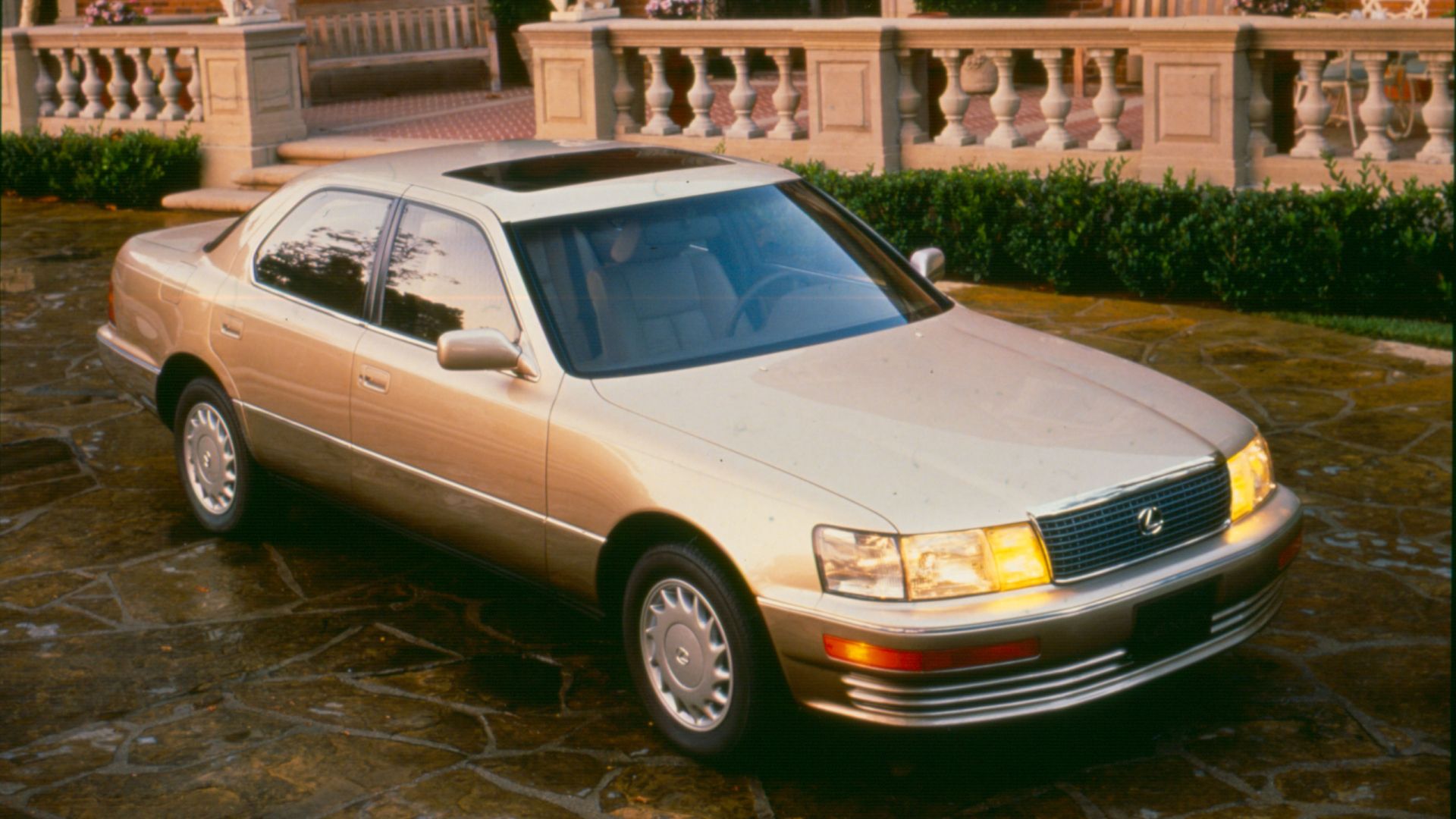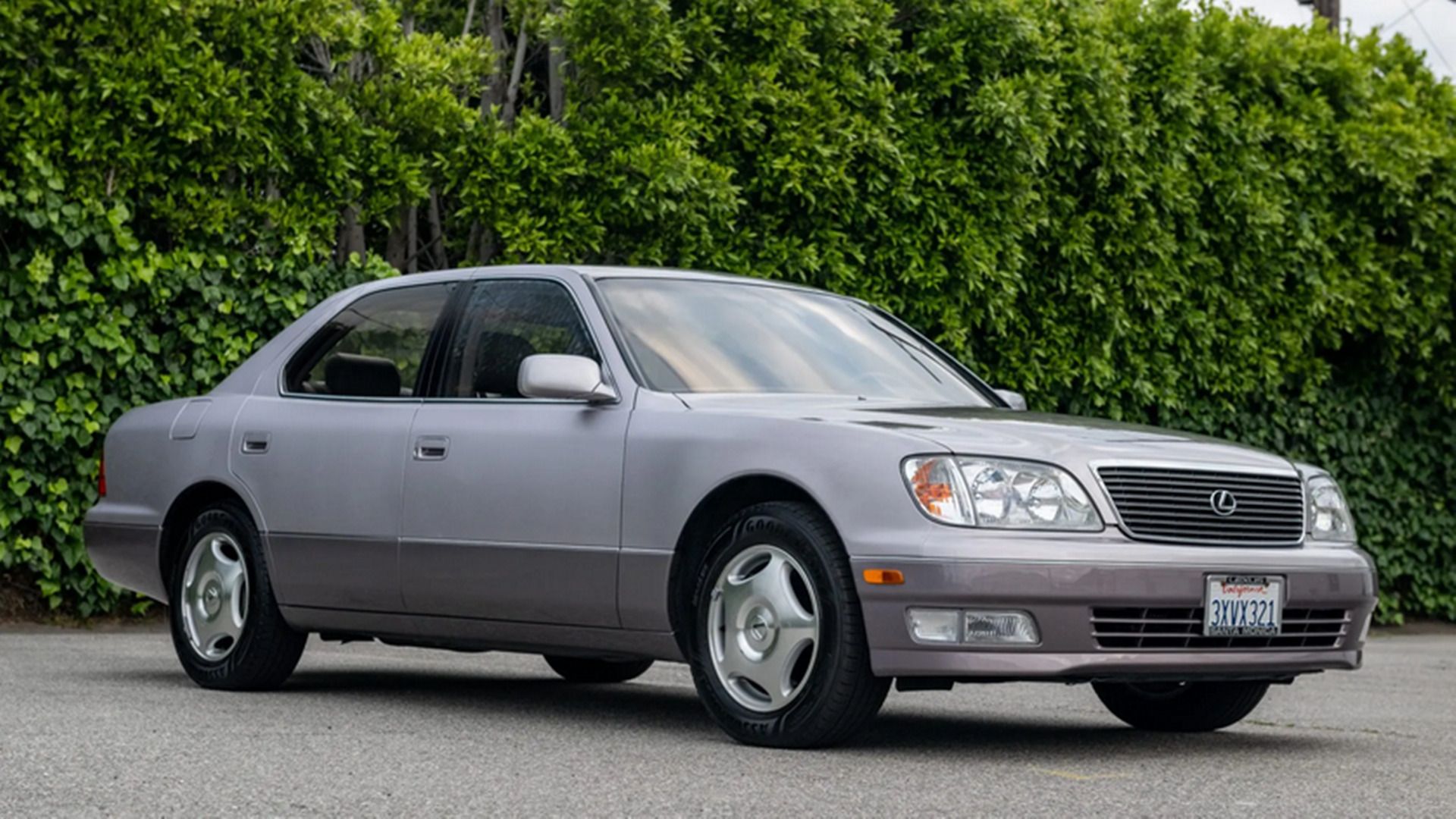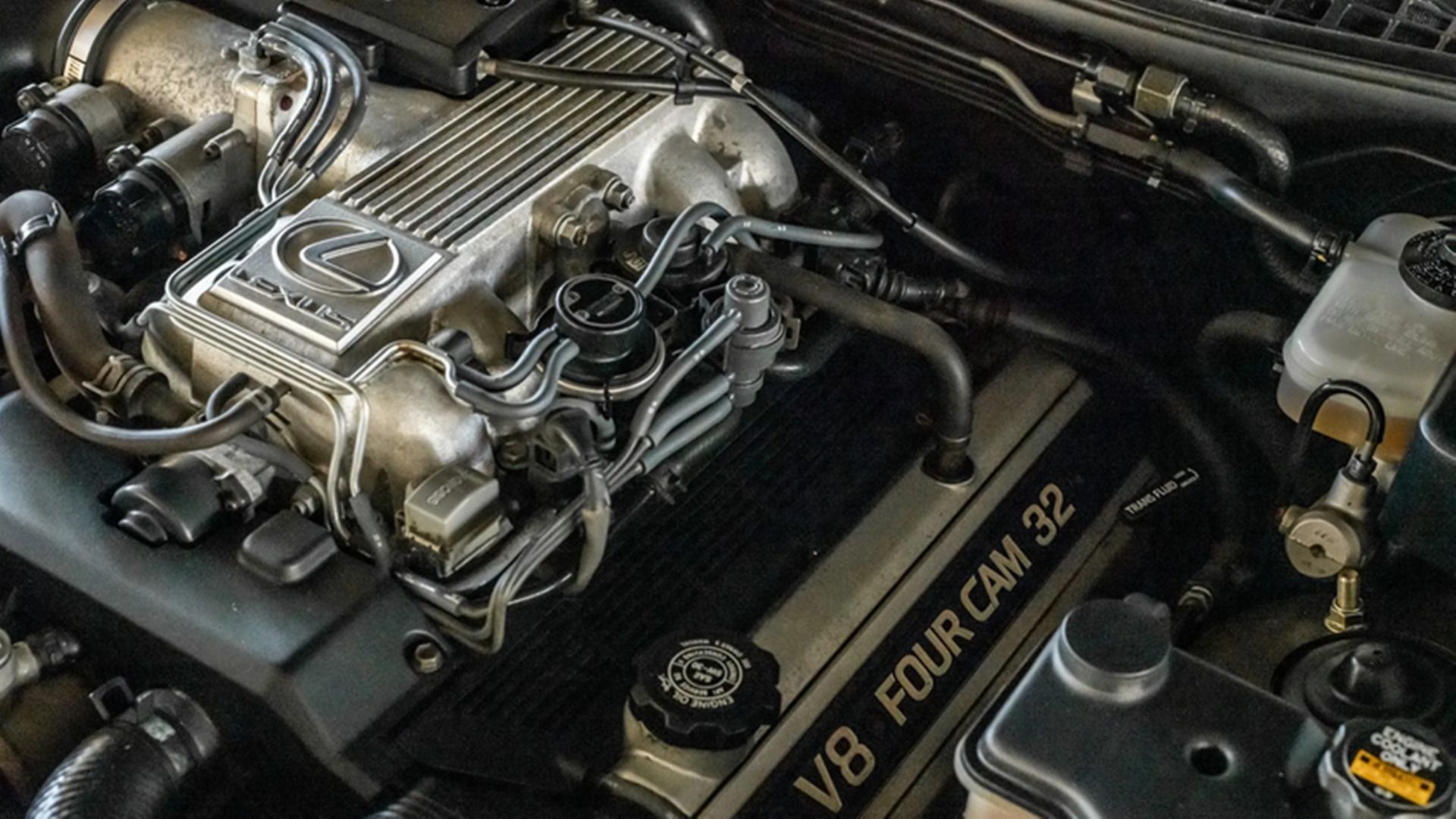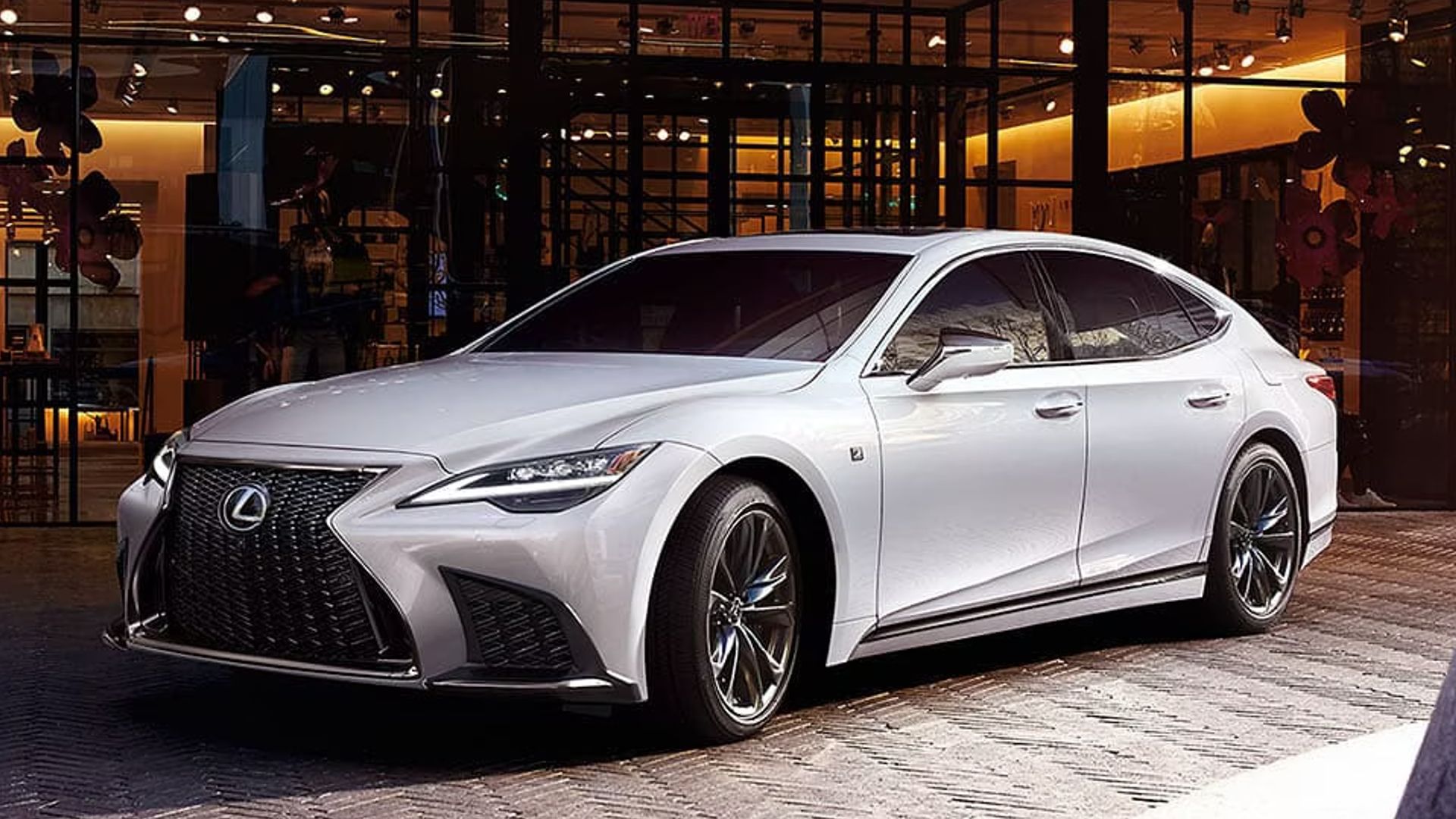Summary
- The Lexus LS400, the first-ever Lexus model, was developed to compete with established German luxury brands like Mercedes and BMW. It succeeded in surpassing its Japanese counterparts and gaining recognition on an international level.
- The LS400 was meticulously engineered with the highest standards in mind. It underwent extensive testing and development, resulting in a car with a low drag coefficient, luxurious interior, and innovative features. Its quality and performance impressed both customers and competitors.
- The LS400’s smooth and powerful 4.0-liter V-8 engine, unique to the Lexus brand, provided a refined driving experience. It was designed for smooth power delivery and was known for its reliability, as evidenced by cars regularly exceeding 200,000 miles. The LS400 set the foundation for the succeeding generations of the Lexus LS flagship vehicle.
Lexus is a brand we all associate with today as the top brand for Japanese luxury. From the elegant styling and attention to detail of each part, they have carved a space for themselves in the Luxury car segment. With a solid background in making good and reliable vehicles with the Toyota brand, Lexus set out to achieve the same objective but at a much higher level.
The Lexus brand was formed to take on this Herculean task of building the best luxury car. It all started with one model that has since remained the top-of-the-line vehicle for the brand. The LS represents the very best of what Lexus has to offer and continues to do so and may very well be the best Japanese Luxury car on sale.
We’ve gathered information from Lexus, PERC, Bring A Trailer, and The New York Times to put this article together.
The Very First Lexus
Japanese vehicles were thriving in the US since their well-built economy cars had taken over the market during the oil crisis. The Japanese market share had climbed from 11% in 1969 to 28% in 1980, this was a huge jump that needed to be controlled. A restriction was placed in 1981 to limit the import of Japanese cars into the U.S. to just 1.68 million cars per year. So the Japanese had to find a way to keep making money with this restriction in place. This led to the formation of Luxury divisions of established manufacturers to sell Luxury cars at a higher price.
In 1983, Ichiro Suzuki led “Project F1” and was tasked to build the best car in the world. It was a huge undertaken that took five years of research and development. Finally, in 1989, Project F1 was unveiled as the new Lexus LS400 which was the very first Lexus model ever made. The LS was a success and catapulted Lexus up the Luxury ladder well above its Japanese counterparts and put them on par with international competitors, particularly those from Europe.
A Luxury Car Built To Take On The Germans
A small team was sent to reside in Orange County, California for a month to study the habits of the rich who would be the potential buyers of their new luxury car. The study was to determine what they liked and wanted in their luxury vehicles and which brands were their to go-to choice. In the end, the LS had its sights set on established German brands like Mercedes and BMW. This would seem impossible for a new company but there was solid backing from the parent company Toyota. There was no budget or time constraints so the team had everything they needed to come up with and eventually build the best luxury car in the world.
Engineered To The Highest Standard
60 designers, 1,400 engineers split among 24 teams, 2,300 technicians, and over 200 support workers took part during the development of the new LS. This was to ensure that every aspect of this car was built to the highest standard no matter how much it cost and how many revisions were needed. The first design sketches were shown in 1985 with a low-slung sports car look but the LS was meant to be a stately-looking luxury car. It was later changed to a traditional three-box design which was befitting for a car of its stature. It also went through extensive wind tunnel testing resulting in a low drag coefficient of 0.29 which was among the lowest of any car at the time. This was also necessary to help maintain good fuel economy.
Inside the flagship sedan, the engineers worked just as hard to make it one of the best living spaces in the world. Over 24 types of woods and various leather materials were tested for over two years before finally arriving with a combination they were satisfied with. The California walnut wood and leather were going to be the touchpoints on the vehicles they had to look good and feel good as well. It was also packed with some of the latest luxury features of the time to make the operations as smooth as possible, they included;
- An automatic tilt and telescoping steering wheel with SRS airbag
- Power adjustable shoulder seat belts
- An electrochromic rearview mirror
- Power-adjustable seats and soft-touch controls
- A holographic backlit electro-luminescent gauge cluster
- Memory function for the driver’s seat, side mirror, steering wheel, and seat belt positions.
- A Nakamichi premium sound system (Optional)
- An integrated telephone with hands-free capabilities.
The LS also features 300 extra innovations for smooth operation and improved silence in the cabin. An optional passive air suspension system was also developed the make the ride even smoother. All these resulted in a very quiet cabin of 58 decibels at 60 MPH which was quieter than its equivalent rivals from Mercedes and BMW. All at a cost of just $35,000 when it was launched in 1989. This undercut the competition by a huge margin as the equivalent BMW and Mercedes cost around $60,000 and $70,000 respectively.
Lexus had spent over a billion dollars in the development of the LS with approximately 450 prototypes built which resulted in such a phenomenal vehicle. In its first year, it sold over 40,000 units but not without issues as 8,000 vehicles were recalled for defective wiring and overheated brake lights which were all remedied in 20 days. The Lexus team had planned for any unforeseen occurrences and were swift to act as this was crucial to the success of the LS. This earned Lexus a great reputation among its new customers and further aided in massive sales.
Competitors bought the LS And tore it down to find out why it was so good and marveled at how Lexus could build such a high-quality vehicle at such a low price. BMW even accused Lexus of selling the LS below the cost value to put them out of business. By 1990, sales of the LS in the US had surpassed that of Mercedes and BMW which were the key competitors. The LS had succeeded in its mission and was the luxury car everyone wanted.
Mercedes Launched the W140 S-class in 1991 which is considered one of the greatest Mercedes models of all time. But the budget was vastly exceeded on that car as it was delayed and many revisions were made to best the Lexus LS. Chief engineer, Wolfgang Peter lost his job for this decision which later resulted in a much more expensive vehicle than its predecessor and way more expensive than the LS with a base price of $72,000 for entry-level cars. But Lexus would not rest as they made a refresh to the LS In 1992 with over 50 new revisions based on customer feedback.
A Silky Smooth V-8 Engine
With its $1 billion development cost, Lexus made sure the LS shared no parts with any existing model and that included the engine. A flagship vehicle needed a befitting engine and most cars in its class made use of a V-8 engine for smooth power delivery. About $400 million was spent on the development of the new engine with 900 prototypes made. The final engine was the 4.0-liter 1UZ-FE naturally aspirated V-8 engine.
Engine Specifications
|
Engine |
NA V-8 |
|---|---|
|
Displacement |
4.0 liters |
|
Power |
250 horsepower |
|
Torque |
260 pound-feet |
|
Transmission |
Four-speed automatic |
|
Drivetrain |
Rear-wheel drive |
(Specifications sourced from Lexus)
Extensive testing was done on this engine in combination with all of its moving parts, suspension, and various mechanical components. Over 1.7 million miles of testing was done on international soil in Europe, Australia, and the US in various weather conditions. This was to ensure the powertrain components worked in all conditions and in harmony to deliver power as smoothly as possible. To show off the smoothness of this engine, Lexus famously made a commercial stacking glasses of wine on the hood while the car was revving and they didn’t topple over.
But this smoothness does not mean the LS400 was slow as it could hit 60 MPH in 8.5 seconds with a top speed of 155 MPH. It made use of a four-speed automatic which sent all that power to the rear wheels. The engine and powertrain were geared towards smooth power delivery which in turn led to a quiet and relaxed feeling inside the cabin. It was also a very reliable engine as it made the 2007 consumer reports list of cars that regularly exceeded 200,000 miles with proper maintenance. There’s even the now infamous million-mile Lexus which is an LS400 that has driven over a million miles.
Now In Its Fifth Generation
The second generation LS400 was introduced in 1994 with a refresh in 1997 and was made till 2000. It was a major improvement on the first car but still used the same engine but with more power. It was going to come at a hefty price tag of $100,000 as the U.S. government threatened to impose tariffs on the growing number of Japanese luxury cars. But further negotiations averted this crisis and allowed the LS400 to start at a base price of $50,000 which still undercut the competition by a good margin. Sales improved and the Lexus LS Continued to thrive.
From the third-gen, the LS 400 name was dropped in favor of the LS430 to signify its new engine size. This was one of the first V-8 engines to be certified as an Ultra Low Emissions engine which was a great feat. The fourth-gen was called the LS460 since the engine was once again bigger, they also introduced the first production V-8 hybrid engine. This version had a five-liter V-8 engine with a hybrid powertrain and was known as the LS 600h. The LS460 was offered in its regular and long wheelbase versions for extra legroom.
The LS is now in its fifth generation with the flagship car known as the LS500. The V-8 is now gone and has been replaced with a twin-turbo V-6. Lexus is now an established luxury brand that has many cars in its lineup and sells cars in over 90 countries. But the LS remains its flagship vehicle showcasing the very best of what Lexus has to offer. They are no longer the underdog and still serve as the benchmark for most luxury vehicles.
The original LS400 was an industry disruptor and was responsible for making the Lexus brand what it is today. A huge gamble was made and even with so many odds against them, the incredible LS400 proved to be the right financial decision. Today, original LS400s can still be found driving around in good condition under $10,000 like this example that sold on Bring A Trailer. From the first-gen to the present model, the LS remains an incredible Lexus flagship Luxury car.
Credit: Source link



